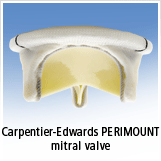What Is A Xenograft?
By Adam Pick on September 21, 2007
I don’t know about you… But, when I was diagnosed with severe aortic stenosis and valve regurgitation I became a heart valve research fanatic. I read up on every possible heart valve option, surgical procedure, the top cardiothoracic surgeons, etc.

Anyways, the term XENOGRAFT appeared during my research on heart valve replacement. So, surprise… surprise… I just checked my email and guess what I found? An question that read, “Adam, Do you know what is a xenograft?”
According to MedicineNet.com The proper definition of a xenograft is a surgical graft of tissue from one species to an unlike species (or genus or family). For example, a graft from a baboon to a human is a xenograft. The prefix “xeno-” means foreign. It comes from the Greek word “xenos” meaning stranger, guest, or host. (Xeno- and xen- are variant forms of the same prefix.)
You may be wondering, “Does that mean some valve replacements use tissue taken from other animals?”
The answer is a definite, “YES!”
There are many heart valve manufacturers (Edwards, St. Jude Medical, Medtronics, ON-X) that use tissue valves from other animals to create valves that are used in heart valve replacement operations on humans.
The two most common forms of xenografts come from pigs and cows. Pig valve xenografts are referred to as porcine valves. Cow valve xenografts are referred to as Bovine Valves.
You can learn more about each of the above-referenced xenograft valves by clicking either – Pig Valve Replacement or Cow Valve Replacement.
I hope this helps answer the question, “What is a xenograft?”
Keep on tickin!
Adam











